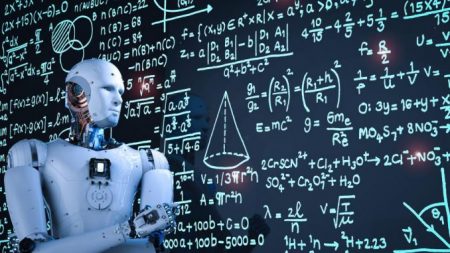April 18, 2019 – A collaboration between researchers at the University of Buffalo, and Palo Alto Research Center (PARC), a Xerox subsidiary, funded by $1 million from DARPA, the U.S. Department of Defense, is teaching the fundamentals of physics to artificial intelligence systems.
You may ask why? How can learning E=MC2 or Newton’s three laws improve a machine’s performance in helping humans to solve problems?
The rationale given is that integrating the laws of physics into machine learning makes AI a better tool for tackling complex data-driven problem-solving. Discerning the wheat from the chaff, so to speak, is one of the great challenges of identifying patterns in complex data. But when you teach an AI the principles of physics it is mind-expanding for the machine as it applies a new set of rules from physics to help it figuratively think outside the box.
Rahul Rai, an associate professor at the University of Buffalo’s Mechanical and Aerospace Engineering Department, in the School of Engineering and Applied Sciences stated in the press release that announced the DARPA project, “we are developing hybrid methods that integrate physics-based models. These are math-based formulas that explain the world around us.”
Ion Matei, of PARC, the University of Buffalo’s partner on the project, talks about the limitations of machine learning defined by only the data available to it. He notes that this type of AI is unable “to generalize beyond [an] initial set of training data.” It is the lack of “scientific coherency with the known laws of physics,” that becomes, therefore, the reason for teaching the scientific principles of the field to AI.
The practicality of learning the laws of physics to AI can be demonstrated in improvements in the performance of equipment for domestic and military use. (There is a reason why it is DARPA, after all, that is funding the research.
Rai describes one example stating, “Unmanned aerial vehicles are trained in collision avoidance. For example, they spot another UAV or a bird and take an action, such as slowing down, to avoid striking that object…What we’re proposing would give that UAV an understanding into the physics of things like how birds fly. This information, combined with weather and data that other sensors are processing, will provide the UAV with better collision avoidance mechanisms.” The end product of the research it is hoped will be “hybrid systems that generalize well, which means they’re good at adapting to foreign environments where data may not be readily available.”
Some might even call research of this type a bit spooky particularly when you consider the potential outcome, the creation of machines capable of independent decision making applying a range of variables outside any data fed to them. I sure hope that the kill switch on any devices that use these laws of physics algorithms will allow us to override them before the AIs figure out in their generalized thinking a way to stop us from shutting them down.
When you think of AI software today that is in wide use, the autopilot features found today on commercial aircraft may come to mind. We have seen the limitations of an AI software system in conflict with humans in the recent crashes of two Boeing 737 Max 8 aircraft. Would an AI endowed with the knowledge of physics have saved those airplanes and the hundreds of passengers who died?















